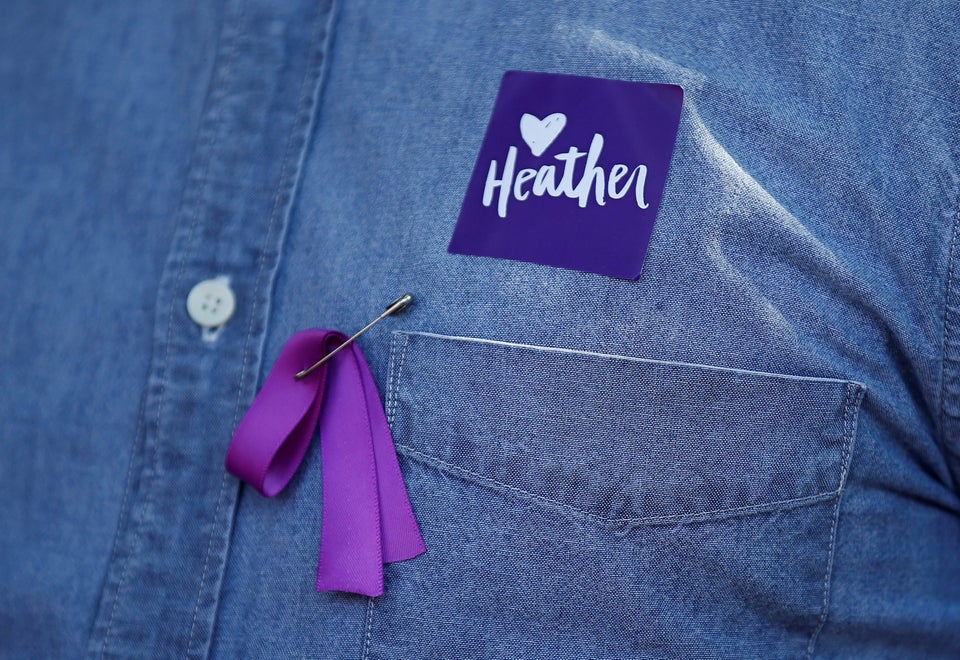The city of Charlottesville, Virginia, began draping its Confederate monuments in large black fabric on Wednesday to honor the woman killed while counter-protesting a white nationalist rally in the city earlier this month.
The city covered the statue of Confederate Gen. Robert E. Lee on Wednesday afternoon along with the statue of Confederate Gen. Thomas “Stonewall” Jackson at another nearby park. The city council voted to cover them both during a emotionally charged Monday meeting that lasted into the early hours of Tuesday morning.
The symbolic gesture is intended to mourn the life of Heather Heyer, the 32-year-old woman killed when an alleged neo-Nazi plowed his car through a crowd of people counter-protesting the “Unite the Rally” in Charlottesville on Aug. 12.
“I would like to explore the idea of covering or obscuring the statues immediately,” city councilwoman Kristin Szakos said, prompting applause from citizens in the room.
A crowd of people who assembled for the shrouding of the Lee statue cheered the moment the black fabric completely covered it, though the statue’s removal is tied up in a court battle.
Not everyone approved of the statues being concealed, however. Hours after the city’s action, a protester named John Mishka began cutting the shroud off the Lee statue with a knife.
“This is a desecration,” he said, gesturing at the cover over the statue, “and this needs to come down.”
Mishka characterized Heyer’s death as that of someone who “was playing in traffic ... and got run over by a crazed Nazi.”
“Yes, slavery was the birth defect of America, and it was wrong,” he said, later urging the growing crowd “not to cover up the warts of our society but to have open, honest discourse.”
Mishka repeatedly called on the city council to hold a public vote to determine the statue’s future.
He was ultimately unsuccessful in his bid to tear down the shroud. City workers, aided by onlookers, re-secured the tarp after he left.
While the city council voted to remove the monument in February, opponents sued the following month to keep the statue in its downtown location. As the legal challenge ensued, the statue became a rallying point and protest destination for white nationalists and other so-called “alt-right” groups.
Charlottesville Mayor Mike Signer, who voted against the statue’s removal earlier this year, said the violence during the recent rally forced him to rethink the issue, and he is now advocating for its removal.
“All of a sudden these statues of Civil War generals installed in the Jim Crow era, they became touchstones of terror, the twisted totems that people are clearly drawn to, trying to create a whole architecture of intimidation and hatred around them that was visited around our town,” he told CNN last week. “It was evil.”
In the days since the chaos in Charlottesville, local governments nationwide have begun to remove their own Confederate statues. In several instances, citizens have taken matters into their own hands by toppling, defacing and tar-and-feathering such monuments.
This story has been updated to include actions and comments from John Mishka.
